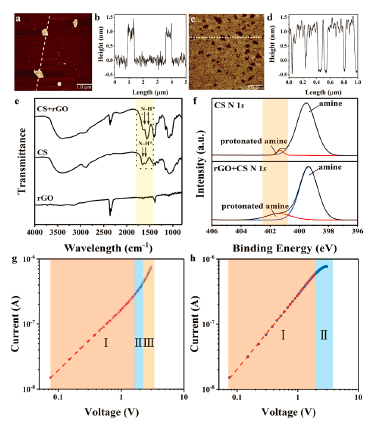文章专利

- 地址: 江苏省苏州市苏州工业园区若水路398号
- 邮箱: tzhang2009@sinano.ac.cn
- 电话: 86-512-62872706
- 传真: 0512-62603079
- 网址: http://nanosensor.sinano.ac.cn

Biological Receptor Inspired Flexible Artificial Synapse Based on Ionic Dynamics; Microsystems & Nanoengineering, 2020, 6(1): 84
Qifeng Lu, Fuqin Sun, Lin Liu, Lianhui Li, Yingyi Wang, Mingming Hao, Zihao Wang, Shuqi Wang, Ting Zhang*

Abstract
The memristor has been regarded as a promising candidate for constructing a neuromorphic computing platform that is capable of confronting the bottleneck of the traditional Von Neumann architecture. Here, inspired by the working mechanism of the G-protein linked receptor of biological cells, a novel double-layer memristive device with reduced graphene oxide (rGO) nanosheets covered by chitosan (an ionic conductive polymer) as the channel materials is constructed. The protons in chitosan and the functional groups in rGO of the channel materials imitates the functions of the ligands and receptors of biological cells, respectively. Smooth changes in response current depending on the historical applied voltages are observed, offering promising pathway towards biorealistic synaptic emulation. The memristive behavior is mainly a result of the interaction between protons provided by chitosan and defects and functional groups in the rGO nanosheets. The channel current results from the hopping of protons through functional groups and is limited by the traps in the rGO nanosheets. The transition from short-term potentiation to long-term potentiation is achieved and the learning-forgetting behaviors of the memristor mimicking those of the human brain are demonstrated. Overall, the bio-inspired memristor-type artificial synapse device shows great potential in neuromorphic networks.
